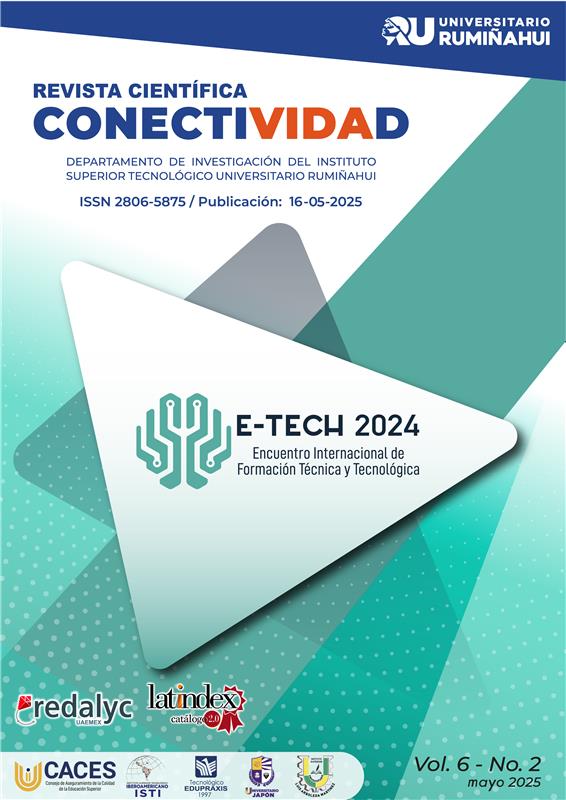Relevance of the surgical instrumentation professional in Ecuador; Case study: Pichincha
DOI:
https://doi.org/10.37431/conectividad.v6i2.275Keywords:
Higher education, Instrumentalist, Surgical instrumentation, Relevance, Health professionalsAbstract
This study deals with the relevance of the professional in Surgical Instrumentation in Ecuador and is rooted in the local and national demands in medical care. It aims to incorporate qualified healthcare personnel in surgical instrumentation, focusing on the province of Pichincha, Rumiñahui canton as a case study. The objective is to identify the need for professional surgical instrumentalists to support medical staff during surgeries, thereby acknowledging their role in the country. For the methodology, a bibliographic research approach was employed to gather national and international data on surgical instrumentalists. Additionally, a quantitative method involving surveys was used to assess the occupational demand for these professionals in health centers in Pichincha. It is evident that in Ecuador, the role of surgical instrumentalists is not as recognized as in other Latin American countries like Colombia, Brazil, and Bolivia, where their presence is crucial for ensuring safe surgical practices. Based on the conducted surveys and subsequent analysis, it is pertinent to formally recognize this profession within Ecuador.
References
ACITEQ, ACFIQ, & COLDINSQUI. (2014). Perfil y competencias del profesional en Instrumentación Quirúrgica en Colombia. Universidad Cooperativa de Colombia. https://go.gale.com/ps/i.do?p=IFME&sw=w&issn=01247255&v=2.1&it=r&id=GALE%7CA644278930&sid=googleScholar&linkaccess=abs
Cabezas, A. (2023). La Formación Técnica y Tecnológica en el Ecuador: Una prioridad de la política pública para impulsar el crecimiento económico [FLACSO Ecuador]. https://repositorio.flacsoandes.edu.ec/handle/10469/19307https://educacion.gob.ec/
Consejo de Educación Superior. (2023). CES - Oferta académica. https://appcmi.ces.gob.ec/oferta_vigente/
Fuentes, L. H., & Blanco, N. E. M. (2020). Intención emprendedora de los estudiantes de instrumentación quirúrgica en la ciudad de.
Hospital de Especialidades Eugenio Espejo. (s. f.). Gestión de Enfermería | Hospital Eugenio Espejo. Recuperado 16 de abril de 2024, de https://hee.gob.ec/?page_id=264
INEC Salud. (2023). Visualizador de camas y egresos Hospitalarios. https://app.powerbi.com/view?r=eyJrIjoiMmE3NDMwOGMtZGJlOC00MDJhLWEwYWMtZDg1MmMwZmViNDBmIiwidCI6ImYxNThhMmU4LWNhZWMtNDQwNi1iMGFiLWY1ZTI1OWJkYTExMiJ9
LOES. (2018). Ley Orgánica de Educación Superior, LOES. https://ppcp.ces.gob.ec/upload/documentos/InstructivosYresoluciones/1/LOES.pdf?p=1712775777707
Ministerio de Salud Pública. (2020). Recomendaciones para el ejercicio quirúrgico en la pandemia COVID 19. https://www.salud.gob.ec/wp-content/uploads/2020/06/Recomendaciones-Consenso-Cirug%C3%ADa-Versi%C3%B3n-1.0-1.pdf
Ministerio de Salud Público. (2022). MSP junto a otras instituciones presentó el Plan Nacional De Cirugías, Obstetricia y Anestesia - Ministerio de Salud Pública. https://www.salud.gob.ec/msp-junto-a-otras-instituciones-presento-el-plan-nacional-de-cirugias-obstetricia-y-anestesia/
Mogollón, I. C. M., Solórzano, Y. B. C., González, A. R. Á., & Zambrano, E. E. O. (2018). La instrumentación quirúrgica: Su relación con la enfermería actual. Revista Conecta Libertad ISSN 2661-6904, 2(1), Article 1.
Organización Mundial de la Salud. (2023). Seguridad del paciente. https://www.who.int/es/news-room/fact-sheets/detail/patient-safety
Senescyt. (2023). Portal de Indicadores de Educación Superior. Servicios Senescyt. https://siau.senescyt.gob.ec/portal-de-indicadores-de-educacion-superior/
Published
How to Cite
Issue
Section
License
Copyright (c) 2025 Instituto Superior Tecnológico Universitario Rumiñahui

This work is licensed under a Creative Commons Attribution-NonCommercial 4.0 International License.
The originals published in the electronic edition under the first publication rights of the journal belong to the Instituto Superior Tecnológico Universitario Rumiñahui; therefore, it is necessary to cite the source in any partial or total reproduction. All the contents of the electronic journal are distributed under a Creative Commons Attribution-Noncommercial 4.0 International (CC-BY-NC 4.0) license.







2.png)






